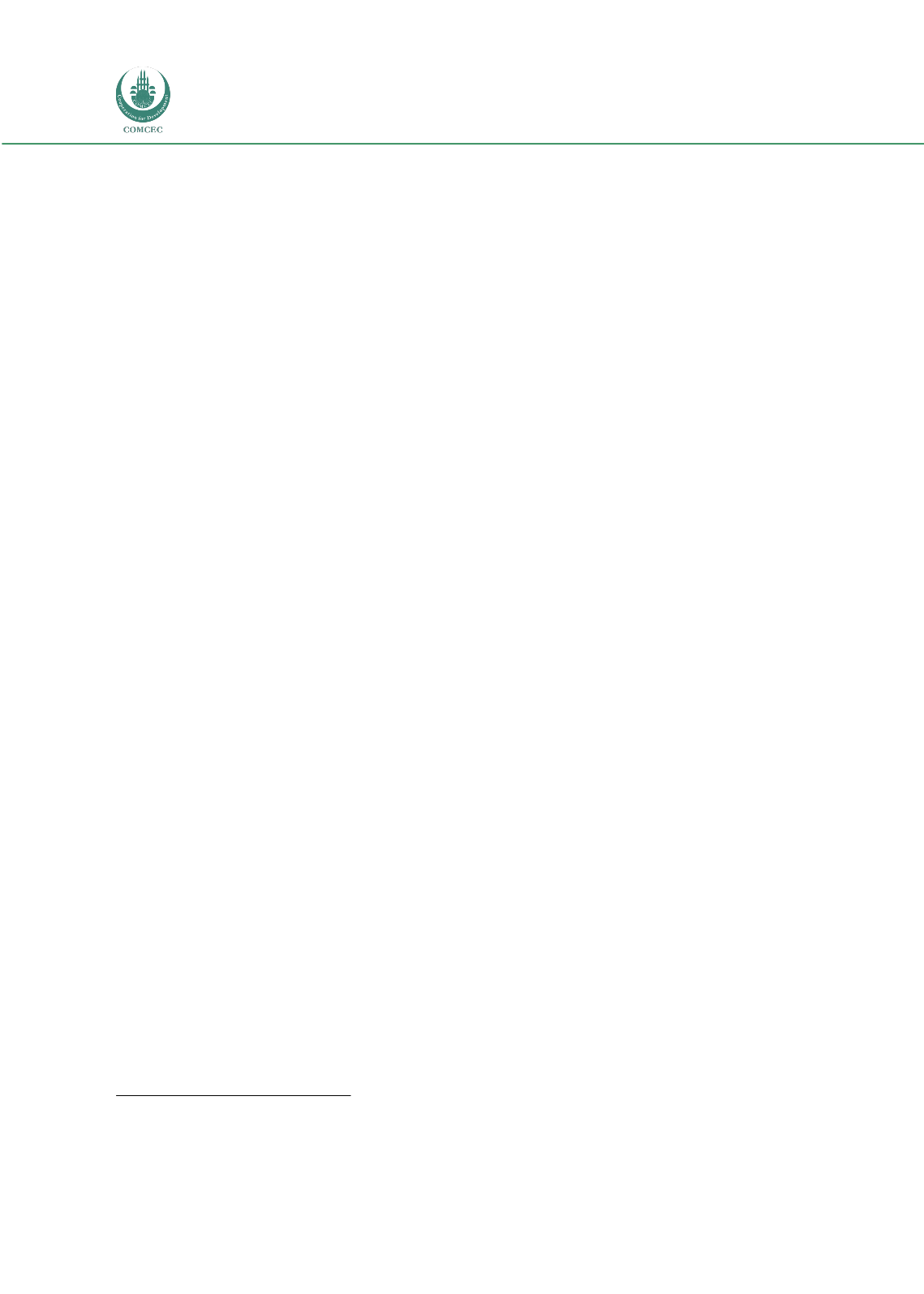

Risk Management in
Islamic Financial Instruments
56
innovative and find new ways to improve the efficiency of liquidity management. Dr. Sandeep
Srivastava at Ernst & Young recommends that Islamic banks “ [set] up a structured fund
transfer pricing framework, [measure] risk in a more rigorous manner, and [adopt] a
structured cost allocation mechanism (EY 21).
3.6 ISLAMIC BANKING AND FINANCE REGULATION AND RISK
MANAGEMENT IN OIC MEMBER COUNTRIES
We present salient features of existing regulation and supervisory mechanism in the IDB
member countries in 3.3.
23
Most of the Member countries have adopted international
standards including Basel Committee’s core principles of capital adequacy and international
accounting standards and IFSB guidelines for capital and regulatory risk management. A
number of countries have adopted AAOIFI guidelines and standards. A few countries have a
growing Islamic banking and finance sector (for example, Bangladesh) without having a
specific Islamic banking law. A few countries have allowed small banks to merge to create a
viable banking organization. Pakistan which implemented a 100% Shariah banking now
retracted from it and started a dual banking model in line with Malaysian dual banking model.
Turkey has implemented a Participatory banking law to bring more clarity to this growing
Islamic banking sector.
Iran, Malaysia, Pakistan and Turkey have implemented both offsite and onsite supervision
systems to better regulate this industry. Many countries are now implementing best practices
in risk management in Islamic banking.
In many countries, Islamic banking regulations have been introduced and in other countries,
Islamic banks are operated under special guidelines from their regulatory authorities. May
countries have separate laws for banking and securities industry? Only one regulator (Bank
Negara Malaysia) regulates both banking and insurance industry. There is a trend now in many
countries to have a universal banking regulation for Islamic finance industry by a one mega-
supervisor. There is also a trend to separate the macro-monetary functions of the central bank
from the supervisory functions either under a separate entity (like Bank of England, 1998) or
under a fire-walled supervisory authority within the Central bank. In a number of countries,
banking supervision and regulation is different from non-banking regulation and supervision.
There are separate securities regulation to regulate the capital market and insurance
regulation to supervise insurance industry.
In a few countries, conventional countries are allowed to open Islamic branches or windows
(Malaysia and Bangladesh). Qatar, most recently, changed its banking law only to allow full-
fledged Islamic banks, no conventional is allowed to own and operate either branches or
windows.
In a few countries, the authorities allow private banks to have their own shariah supervisory
boards without any central bank control (for example, Bangladesh). Malaysia and Sudan have
23
M. Umar Chapra and Tariqullah Khan (2000): Regulation and Supervision of Islamic Banks, Occasional Paper #3, Islamic
Research and Training Institute, Jeddah, Saudi Arabia

















